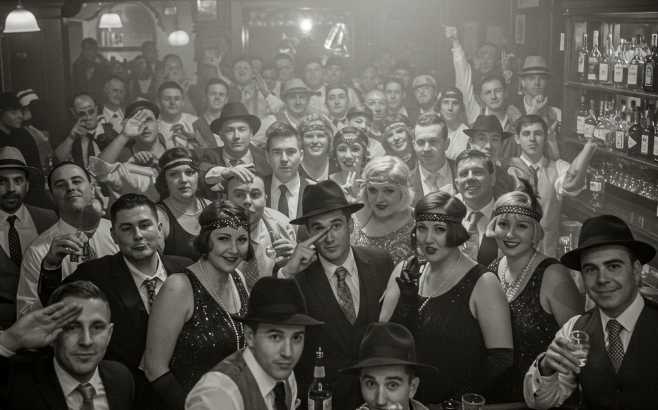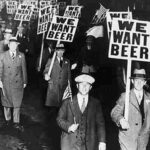In the rough-and-tumble days of the Old West, drinking establishments were known as saloons. These places weren’t just where a cowboy went to grab a whiskey—they were gritty, rowdy hangouts frequented by rough men, dancing girls, and prostitutes. That reputation didn’t do them any favors. In fact, the bad image of saloons stirred up a national backlash that eventually led to Prohibition.
By the early 1900s, temperance movements had gained serious momentum. Many people believed alcohol was at the root of crime, poverty, and moral decay. In 1919, this belief became law with the passage of the 18th Amendment, ushering in Prohibition and outlawing the sale and consumption of alcohol across the United States.
But here’s where it gets interesting.
Rather than roll over, savvy barkeepers took their operations underground. The new version of the saloon was the speakeasy, a hidden venue that required a password to get in and operated under the radar. But it wasn’t just the secrecy that made them different—it was the image.
Speakeasies were more refined and inclusive. Unlike saloons, which catered almost exclusively to men, speakeasies rolled out the red carpet for women. And the timing couldn’t have been more perfect: In 1920, women gained the right to vote.
Suddenly, women weren’t just welcome in these establishments—they were central to them. The cocktail culture that blossomed in speakeasies was glamorous and elegant. Jazz music played in the background, and both men and women sipped mixed drinks in stylish clothes. The wild, violent image of the saloon was replaced with the allure of sophistication.
This shift didn’t just help speakeasies thrive despite Prohibition—it helped change public opinion. By the early 1930s, the nation was ready for a new approach. With mounting pressure from voters—including a large number of newly empowered women—Prohibition was repealed in 1933.
It’s one of history’s greatest examples of the power of rebranding.
The saloon, a symbol of vice and violence, was reborn as the speakeasy—mysterious, stylish, and gender-inclusive. This wasn’t just a change in furniture or lighting. It was a strategic pivot in identity, messaging, and audience.
And it worked.
The story of the saloon-to-speakeasy evolution shows that public perception isn’t fixed—it can be reshaped. When businesses, brands, or even entire industries shift their image in alignment with cultural changes, they can thrive—even in the face of laws designed to shut them down.
So what’s the takeaway here?
If your current image or messaging isn’t connecting with your audience—or worse, it’s turning them away—it may be time for a rebrand. That doesn’t mean you throw everything out. Like the speakeasies, you build on what came before, but you shift the vibe, the narrative, and most importantly, the audience you want to reach.
Related Post: The Evolution of Brand Names in the Digital Age
What aspect of your current image might be holding you back—and how could you rebrand to reach a broader, more supportive audience?












